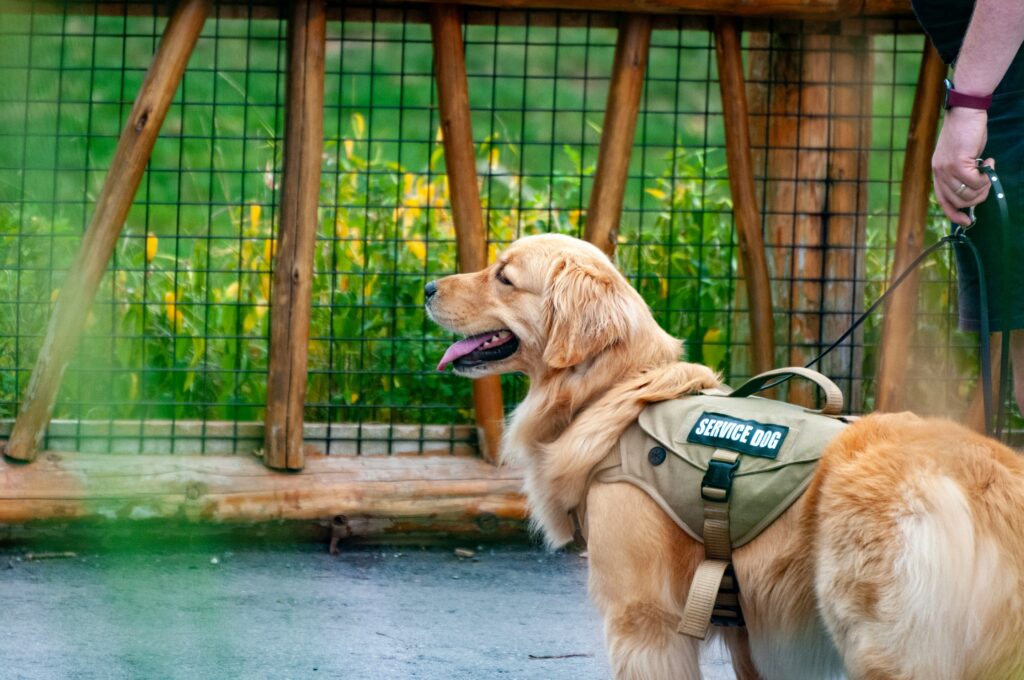Service animals have become an essential part of many people’s lives, providing support and companionship while performing critical tasks that enhance their owners’ independence and well-being. The concept of using animals for assistance is not new; it has deep historical roots that span centuries. Let’s explore the fascinating history of service animals, their evolving roles, and the incredible impact they have on those in need.
The Early Beginnings of Service Animals

The use of animals for assistance can be traced back thousands of years. Evidence suggests that dogs were among the first animals to be domesticated by humans, initially serving as hunting partners and protectors. Over time, their roles expanded as humans recognized their potential to assist individuals with various disabilities.
In ancient Rome, for instance, we find records of blind individuals being accompanied by dogs, which were trained to navigate obstacles and provide guidance. Similarly, throughout history, different cultures have utilized animals like horses and elephants for tasks ranging from transportation to therapeutic support.
The Birth of Modern Service Dogs
The modern concept of service dogs began to take shape in the early 20th century, particularly in the aftermath of World War I. Many soldiers returned from the battlefield with injuries, including blindness and mobility challenges. To assist these veterans, organizations began training dogs to provide support and companionship. The idea was revolutionary; these dogs could not only help with navigation but also perform tasks like retrieving items and providing emotional support.
The first formal training programs for service dogs were established in Germany during this time, eventually making their way to the United States. One notable figure in this movement was the founder of the first guide dog school, Dorothy Eustis, who established the Seeing Eye program in 1929. This groundbreaking initiative focused on training dogs to assist visually impaired individuals, laying the foundation for service animal programs we recognize today.
Expanding Roles and Recognition
As awareness of the benefits of service animals grew, so did the recognition of their various roles. While guide dogs for the visually impaired were the first to gain widespread acceptance, the scope of service animals quickly expanded to include those trained to assist individuals with mobility impairments, hearing loss, and psychiatric conditions.
In the 1970s, the Americans with Disabilities Act (ADA) was enacted, further solidifying the rights of individuals who rely on service animals. This landmark legislation ensured that service animals would have access to public spaces, allowing their owners to navigate society more freely and confidently.
The Importance of Training and Certification

One of the critical aspects of service animals is their specialized training. These animals undergo rigorous instruction to learn how to perform specific tasks related to their handler’s disabilities. For example, a service dog may be trained to open doors, retrieve medications, or alert their owner to impending seizures.
Certification programs have emerged to help ensure that service animals are appropriately trained and equipped to handle their responsibilities. While the ADA does not require service animals to be formally certified, many organizations and trainers adhere to best practices to maintain the highest standards of care and performance.
The Rise of Therapy and Emotional Support Animals
Alongside traditional service animals, therapy animals and emotional support animals (ESAs) have gained recognition for their invaluable contributions to mental and emotional well-being. Therapy animals, which can include dogs, cats, and even rabbits, are trained to provide comfort and companionship in various settings, such as hospitals, schools, and nursing homes.
ESAs, while not necessarily trained to perform specific tasks, offer essential emotional support to individuals dealing with mental health challenges. The presence of these animals can alleviate anxiety, depression, and stress, enhancing the overall quality of life for their owners.
Lifesaving Impact on Individuals and Communities
The impact of service animals on individuals and communities cannot be overstated. For those with disabilities, these animals provide more than just physical assistance; they offer companionship, independence, and a sense of purpose. Many individuals who rely on service animals report improved mental health, enhanced social interaction, and increased confidence in their daily lives.
Moreover, service animals contribute to broader societal awareness and understanding of disabilities. Their presence often serves as a conversation starter, helping to break down barriers and stereotypes associated with disabilities. This increased visibility fosters empathy and encourages communities to become more inclusive and supportive.
The Future of Service Animals

As our understanding of disabilities and mental health continues to evolve, so too does the role of service animals. Advances in training techniques and a growing awareness of the various needs of individuals with disabilities will likely lead to more specialized service animals capable of assisting in unique and innovative ways.
In conclusion, the history of service animals is a testament to the enduring bond between humans and animals. From their early roles as hunting partners to their current lifesaving functions, service animals have proven to be invaluable companions that enhance the quality of life for countless individuals. As we continue to advocate for the rights and recognition of these extraordinary animals, their impact on society will only grow, ensuring that they remain a vital part of our communities for years to come.


